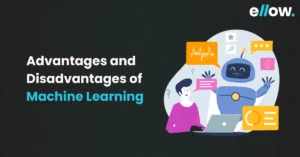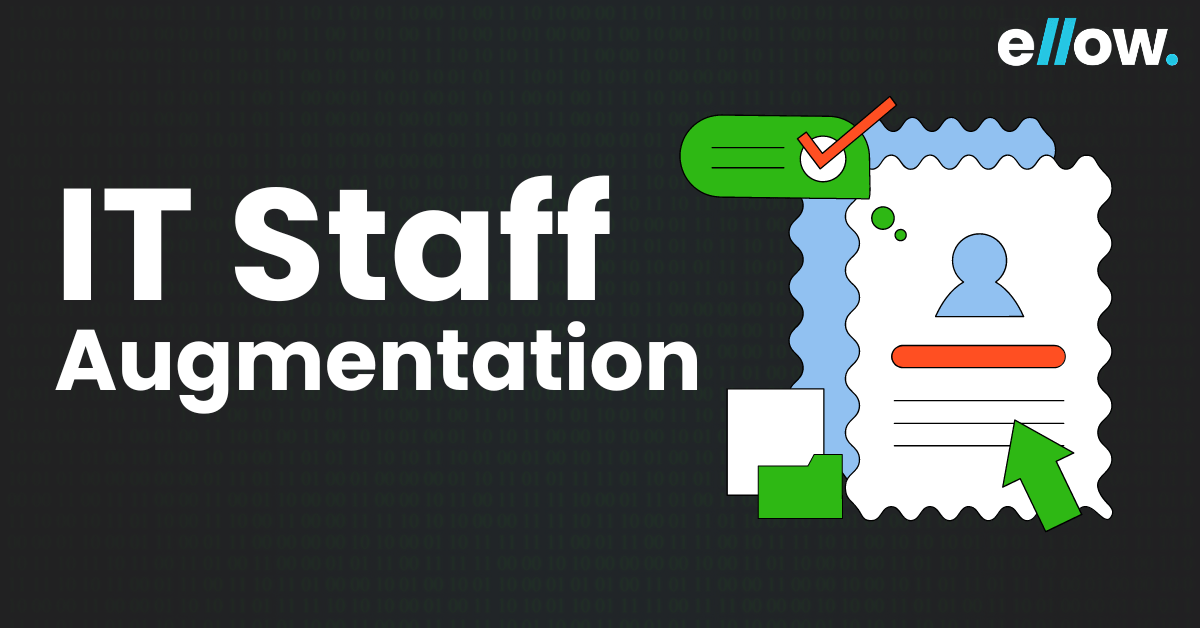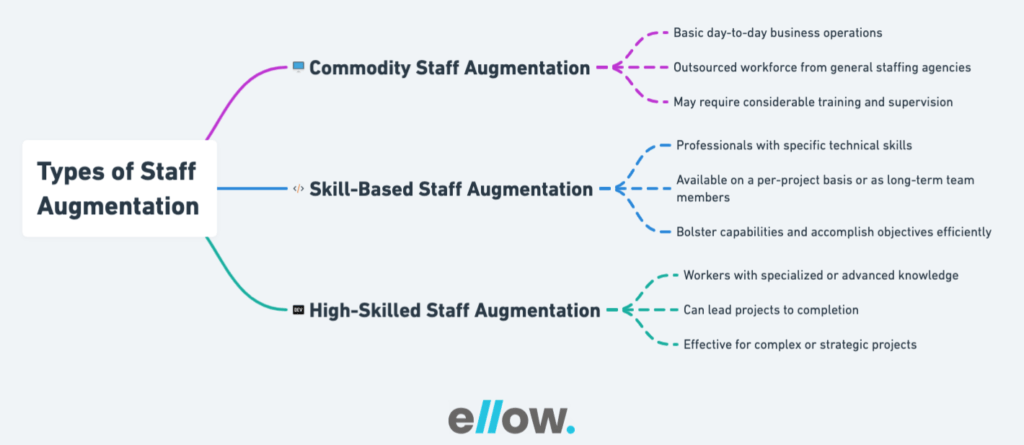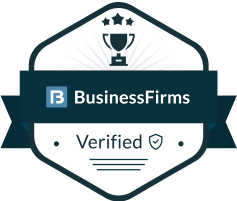
Blog
What is IT staff augmentation and why does it matter?
- Suvankar Das
- March 7, 2024
- 2:05 pm

Effective IT talent management is vital for any business to thrive in today’s world. Regardless of your company’s size, technology plays a critical role in streamlining operations, boosting productivity, and outpacing competitors.
However, managing IT talent can present challenges, such as finding qualified personnel, staying within budget constraints, and keeping up with advancements.
That’s where IT staff augmentation comes in.
In this article, we’ll explore the ins and outs of staff augmentation, including how it works, its benefits and challenges, the different forms it can take, and how to effectively manage this practice within your organization.
Get ready to learn everything you need to know about staff augmentation.
Table of Contents
What is IT Staff Augmentation?
IT staff augmentation is a modern-day strategy where businesses hire contractual or temporary employees to work alongside full-term employees.
This approach helps organisations tackle the growing requirements, especially when handling a project. It is one of the most economical ways which helps deliver the desired project results, saves time, and reduces costs.
Streamline Your Business With These Three Smart Staffing Strategies:
- Outsource crucial tasks to lower overhead and sustain your workflow
- Hire on a per-project basis to reduce risk and increase flexibility
- Engage staff augmentation consultants to access specialized expertise
Reduce costs, minimize risks, and leverage specific skills and experiences to keep your business running. With these tactics, you’ll be able to eliminate discrepancies in the product development cycle and boost the number of project turnovers.
Say goodbye to inefficiencies and let your business flourish with ease.
This strategy works best for companies that maintain a quick market-to-consumer ratio. As per the reports, the global market of IT Staff Augmentation will grow at a CAGR of 4.06% during 2022-2026.
How Does IT Staff Augmentation Work?
An organization to reach its full potential requires the support of its employees. Unfortunately, lacking adequate workforce can lead them away from it. IT staff augmentation, on the other hand, can create a bridge.
Let’s dive deeper and understand how to implement IT staff augmentation in your organization:
You must pinpoint the precise IT skills required to kick off the first step of implementing the IT staff augmentation process. This could encompass programming languages, cybersecurity expertise, and more. Identify what makes your team whole and have clarity. This will help you take the right direction and choose your skilled contractual candidates.
Your next step would be to consider finding an IT staffing agency to answer your requirements and provide resources. These agencies typically have a vast network of highly skilled IT professionals available for short-term or long-term contracts.
These staffing agencies understand the scope of your project, the timeline you are working with, and the level of expertise required to execute the job with the highest quality possible.
Based on this information, the IT staffing agency will use its extensive database and network to identify candidates with IT skills that align with your project or staffing requirements.
When the staffing agency provides the list of eligible candidates, you can conduct interview sessions and start the assessment.
Ask them questions to judge their technical know-how. This helps in determining whether their knowledge satisfies your requirement for the role.
Ask questions about the relevant techniques and tools, problem-solving, communication, and soft skills.
Once you’ve selected suitable candidates, you can onboard them as temporary employees or contractors. Share the company values, goals, and culture, and give them the project understanding and deadlines.
Keep your permanent employees in the loop, once the onboarding is complete. Post that, it becomes easier to assign them tasks, monitor their progress, and provide them with feedback.
It’s essential to ensure that they comply with your company’s policies and procedures. This will help promote productivity.
Finally, once the contract ends, you can offboard the contractors. This involves ensuring that all their accounts and accesses are revoked and all company equipment is returned.
Conduct an exit interview to gain feedback on their experience in your organization. This feedback can help you improve your processes and ensure that your future employee based initiatives succeed. On the other hand, you can always retain them or extend their term as per their comfortability.
Types of Staff Augmentation
Do you know, in the UK companies are struggling to fill their vacancies, therefore, losing up to £63 bn every year, therefore, strategies like staff augmentation helps. Let’s discuss the types of staff augmentation in detail:

Commodity Staff Augmentation lets businesses or startups find personnel for basic day-to-day business operations. The workforce is outsourced from general staffing agencies.
While commodity staff augmentation can help businesses reduce costs and improve operational efficiency, it’s crucial to acknowledge that these workers may not possess the specialized skills or knowledge necessary to handle complex tasks. Therefore, they may require considerable training and supervision to perform their duties effectively.
The concept of skill-based staff augmentation revolves around enlisting professionals with specific technical skills or knowledge to complement in-house teams. Depending on the company’s needs, these professionals are available on a per-project basis or as long-term team members.
Skill-based staff augmentation is a sought-after approach for businesses that lack the specialized skills or expertise necessary to complete their projects in-house. By bringing in external professionals with the requisite skills, businesses can bolster their capabilities and accomplish their objectives more efficiently and effectively.
High-Skilled Staff Augmentation involves hiring workers with specialized or advanced knowledge. They can perform tricky or tactical tasks without any problem. They can lead projects for a limited period up to their completion.
This type of staff augmentation can be an effective approach for businesses tackling complex or strategic projects, such as software development, data analysis, cybersecurity, and more. These professionals bring expertise and experience to the project and can help businesses achieve their goals more quickly and effectively.
Benefits of IT Staff Augmentation
According to a report, there will be a shortage of talent, resulting in an annual revenue discrepancy of $8.5 trillion by 2030.
IT staff augmentation comes out as a perfect solution. It can help businesses recover from budgetary norms when hiring individuals. Let’s discuss some of its benefits:
IT staff augmentation is a great cost-saving tactic for businesses big or small.
Instead of hiring full-time IT staff, this option allows you to employ top-notch professionals as per requirement, saving money on salaries, benefits, and other expenses.
By choosing from a network of skilled IT professionals, businesses can benefit from economies of scale and see even greater reductions in their IT costs. It’s a smart strategy for any business looking to maximize efficiency and minimize costs.
The flexibility provided by IT staff augmentation is a significant advantage for businesses. This allows them to adjust the size of their IT teams based on their current requirements.
For instance, if there is a sudden surge in demand, businesses can bring in additional IT resources through IT staff augmentation to handle the increased workload. Such flexibility can effectively help businesses manage their IT costs, ensuring they only pay for the required resources.
IT staff augmentation can help businesses gain a massive pool of talented experts they may not have access to otherwise.
IT staff augmentation providers generally have a vast pool of proficient and experienced IT professionals available for short-or long-term assignments.
This implies that businesses can efficiently find the appropriate IT professionals to satisfy their requirements, such as software developers, network engineers, or cybersecurity experts. By accessing talented resources, businesses can ensure they have the right people available to support their IT needs, even if they lack the resources to hire these professionals full-time.
IT staff augmentation can provide a valuable solution for businesses looking to expedite the delivery of products and services to market. By supplementing existing IT resources with additional personnel, businesses can streamline the project’s development process. This is especially crucial for businesses that need to maintain a competitive edge.
Another benefit of IT staff augmentation is that it can enhance the quality of work. By recruiting highly skilled and experienced IT professionals, they can guarantee that their projects are built as per the standard. IT staff augmentation providers typically have rigorous screening processes to ensure they only collaborate with the most proficient experts.
What are the Objectives of IT staffing?
Aligning with Business Goals: To ensure the IT staff’s skills and efforts are directly contributing to the organization’s strategic objectives and business goals.
Filling Skill Gaps: To identify and fill any skill gaps within the IT department by hiring individuals with the necessary technical expertise and experience.
Ensuring Flexibility and Scalability: To create a flexible staffing strategy that can easily adjust to changing technology trends and organizational demands, allowing for scalability in operations.
Improving Service Delivery: To ensure the IT department can deliver high-quality services and support to internal and external users, contributing to overall user satisfaction and operational efficiency.
Cost Management: To optimize the cost of IT operations through strategic staffing decisions, including the mix of full-time, part-time, and contract employees, to balance labor costs with operational needs.
Training and Development: To ensure continuous professional development of IT staff through training and certifications in emerging technologies and methodologies, maintaining the department’s competitiveness and innovation capability.
Retention and Motivation: To implement strategies that boost employee morale, job satisfaction, and retention rates within the IT department, recognizing the importance of keeping valuable talents.
Future-Proofing the Organization: To anticipate future technological trends and challenges, staffing the IT department with professionals who can navigate and lead the organization through future digital transformations.
When to Consider IT Staff Augmentation?
Working around tight deadlines can get daunting. It doubles the workload and doubles the pressure. This impacts the quality of work. Businesses spend millions of dollars finding tools to make day-to-day work easier, but often are not able to due to a lack of talent.
IT staff augmentation is the best solution to help you get on top of your projects. You can hire staff based on project timelines and distribute the workload equally.
IT staff augmentation helps maintain a balance of talent in the team. Whenever there’s a new project to work on and organizations lack in-house talent, these staffing agencies come in handy. You can hire staff temporarily based on the project timelines.
For example, a company may need to develop a website on Python, but its in-house developers may not have the necessary skills or experience. In that case, the company can go for IT staff augmentation services to hire a Python developer.
Conclusion
Staff augmentation in IT optimizes the hiring process by offering short-term access to skilled resources, presenting a strategic advantage for organizations navigating challenges. For assembling a team of top-tier IT professionals, Ellow serves as an ideal starting point.
ellow allows immediate access to a vetted talent pool, eliminating the cumbersome short-listing phase. With Ellow, you can swiftly onboard exceptional software developers within 48 hours.
Begin your journey towards building a robust IT team today!
Frequently Asked Questions
Staff augmentation in the IT industry is a strategy that allows businesses to add skilled IT professionals to their teams based on the specific requirements and needs of their current projects. This model provides a flexible solution for companies to augment their staff with the desired skill set when necessary, rather than going through the traditional, time-consuming hiring process.
IT staff augmentation allows a company to hire tech talent globally and manage the augmented team directly, almost like their in-house team members. The resources can be scaled up or down as needed.
On the other hand, outsourcing involves contracting out an entire project or certain operations to an external agency or organization, relinquishing direct control over the workforce.
Staff augmentation can be very beneficial, providing flexibility, reducing overhead costs, and giving access to a larger talent pool. It’s particularly useful when a project requires specific skills temporarily.
However, it can also pose challenges like management complexity and potential IP security issues. The effectiveness depends largely on the specific needs and capabilities of the organization.
IT staff augmentation services offer various benefits like flexibility in scaling teams up or down as per project requirements, cost-effectiveness by reducing overhead expenses, access to a diverse and vast pool of global talent, and ability to swiftly start new projects with the needed skill sets.
The three types of IT outsourcing are:
- Project-based outsourcing: where a company hires a third-party provider to work on a specific project.
- ITO (IT Outsourcing): This involves outsourcing all IT functions to a third-party provider.
- BPO (Business Process Outsourcing): This involves outsourcing specific business processes such as customer service or accounting to a third-party provider.
A software company has landed a large contract that involves technologies they are not highly experienced with. Instead of investing time and resources to hire and train new full-time employees, they can use staff augmentation to temporarily bring in experts in those technologies to ensure the project’s success.
Yes, staff augmentation can help your company by providing the necessary expertise for specific projects, allowing for easy scalability, and reducing overhead costs associated with permanent hiring. However, the effectiveness of staff augmentation depends on your company’s specific needs and how effectively the strategy is implemented.
Staffing typically refers to the traditional hiring process where a company recruits employees for long-term, permanent positions.
Staff augmentation, on the other hand, is a flexible approach where companies hire on-demand resources on a contract basis to fulfill temporary or project-based needs.
Staff augmentation is one method of outsourcing talent that provides several benefits such as cost-effectiveness, flexibility, and access to a larger talent pool. depending on their complexity and scope.
Staff augmentation is a strategy used to quickly add specialized skills to a team or to scale up the IT workforce during peak workloads, without the long-term commitment of hiring full-time employees. It provides a flexible method to adapt to project-specific needs and to rapidly changing business environments.
Staff augmentation involves adding temporary professionals to work in conjunction with the existing team, where the company manages the augmented staff directly. Consulting involves hiring an individual or team to provide expert advice, often functioning more independently and less as an integrated part of the existing team.
In staff augmentation, the company manages the augmented staff directly as an extension of their in-house team. In the dedicated team model, a third-party provider forms and manages a team of professionals dedicated to the company’s projects, thereby reducing the company’s management burden.
Suvankar Das
Suvankar Das
Recent posts


8 Tips for Beginners to Improve Programming Logic






